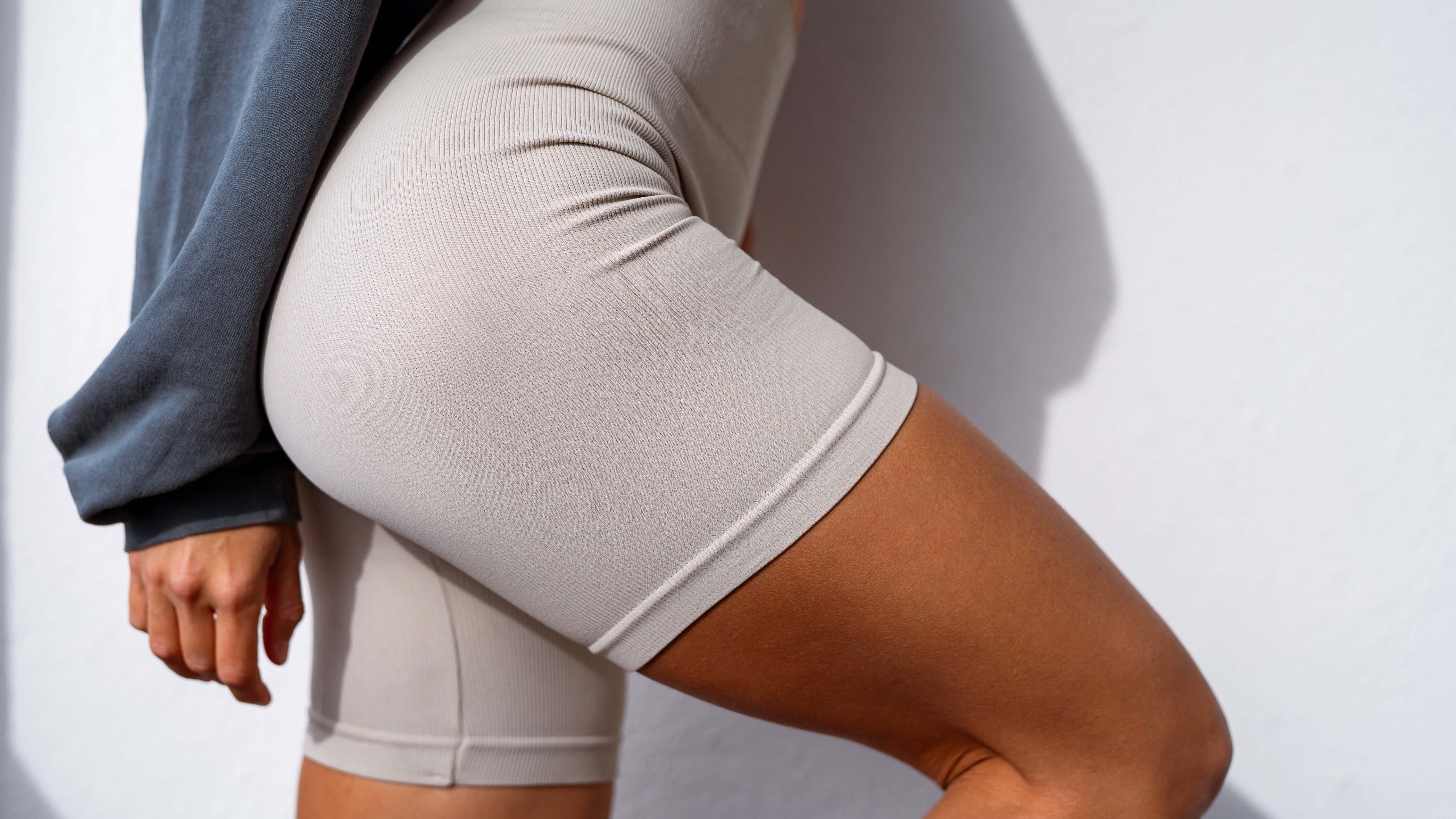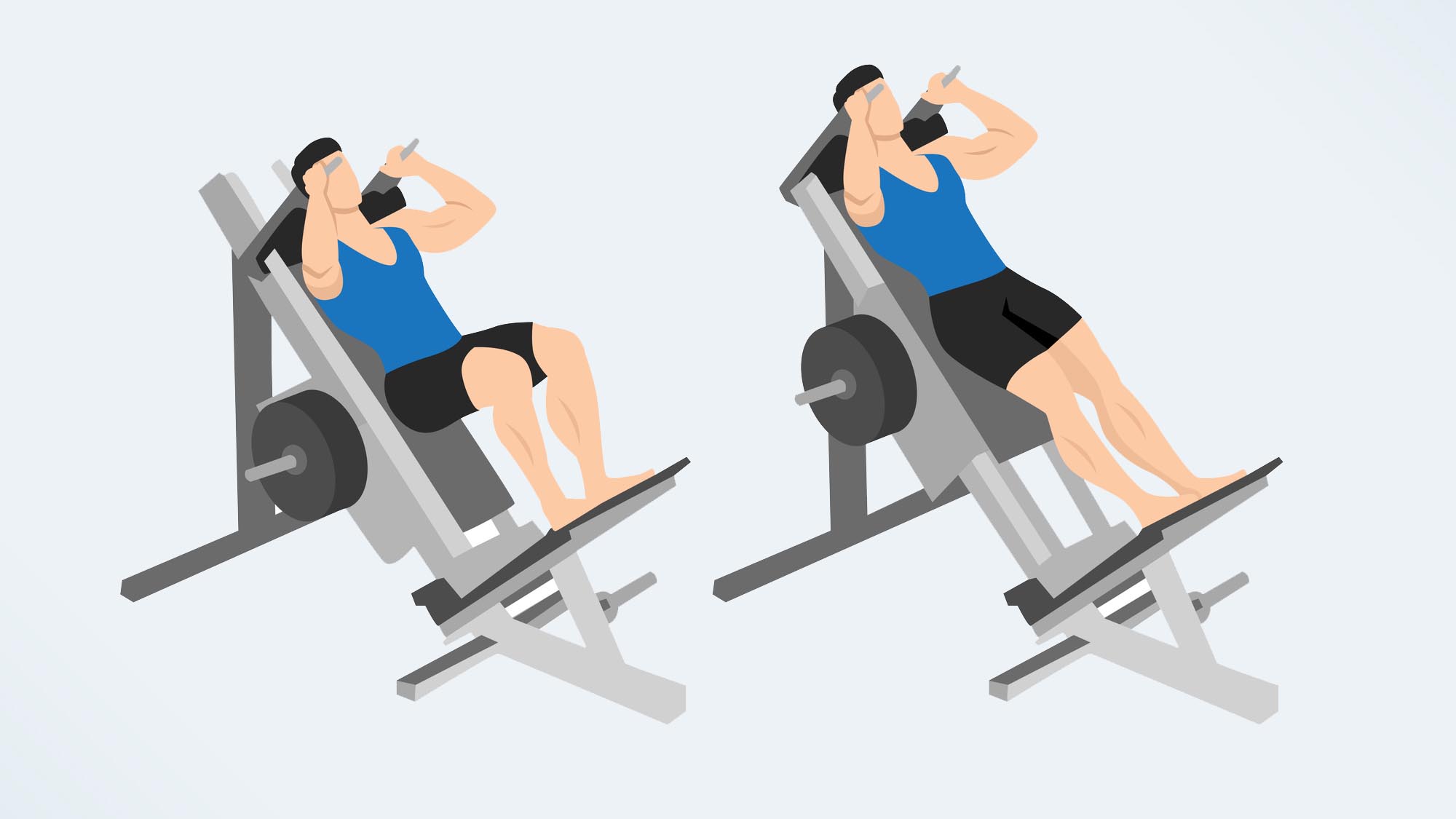
The pendulum squat is the squat variation you might never have known you needed, but it could be a game-changer for your lower back and knees, and it’s certainly worth a try if you want to grow your quads and strengthen your hips and legs.
I’m no stranger to gym machines, but I've never seen the one for this exercise in any gym I’ve visited, so either I’m hitting up the wrong venues, or I’m not looking hard enough. For that reason, I watched Ben Mighty’s demonstration video on YouTube (high-caliber journalism, I know) to learn how the pendulum squat works in more detail.
I’m not afraid to learn, and I certainly understand the hype around the pendulum squat, but what are the benefits? Here’s everything you need to know.
How to do pendulum squats
The best way to learn the pendulum squat is by watching Mighty’s video, but here’s a quick rundown of the key cues:
- Start with your back against the backrest of the machine, with your shoulders resting against the shoulder pads and your lower back supported
- Extend your legs and place both feet onto the foot plate, hip-width apart
- Foot position is up to you, but Mighty keeps his toes on a slight outward angle and heels turned in
- Shift your weight onto your toes and release the lock position on the machine
- Place your heels down again, then bend your knees and lower deep into the squat. Avoid caving knees and drive your knees in line with your toes
- Pause, then drive through your heels to fully extend your legs and “stand”
- Repeat for 3-4 sets of 8-12 reps, depending on your program
- Once you’ve completed your reps, lift onto your toes again and re-lock the machine
- Once you feel comfortable, add plates to the machine.
Pendulum squat vs hack squat
I’m not a massive fan of machines over free weights, but this machine-based squat exercise reduces stress on your knees and lower back without compromising your range of motion, allowing you to drop your butt deep toward your heels every rep — something you might not feel comfortable doing with a barbell or dumbbells.
It looks very similar to a common gym exercise called the hack squat (pictured below), and it is, but some key differences will determine which machine you use, including muscle emphasis, joint mobility and pain.

The hack squat comes in various shapes and sizes, but you’ve probably seen the machine that positions the body facing slightly upward and leaning back, with your spine resting on the machine. During the pendulum squat, you’ll face directly forward in an upright position with your legs extended in front of you.
Get instant access to breaking news, the hottest reviews, great deals and helpful tips.
You can change your foot position to emphasize different muscle groups using both machines, targeting the quads, glutes, hamstrings and calves to varying degrees.
Regardless, you can change your foot position to emphasize different muscle groups using both machines, targeting the quads, glutes, hamstrings and calves to varying degrees.
The further forward your feet, the more emphasis on the glutes and hamstrings; the deeper you squat (and narrower you bring your feet), the more you’ll hit your quads hard.
However, the pendulum platform is typically adjustable, so you can adjust it to suit your range of motion, squat depth and joint mobility, making it kinder on the spine and lower-body joints.
During the hack squat, you descend vertically in a straight up-and-down motion; during the pendulum squat, as the name suggests, you create an arcing or swinging motion, hitting the quads a lot harder with less help from the glutes and hamstrings.
You might find you get more power for the leg drive during hack squats, so pendulum squats may require you to drop the weights slightly.
Another difference is that the pendulum is kinder to the knees and lower back, allowing adjustable depth and range of motion on the platform. Still, focus on controlled motion and squeeze your quads at the top of every rep as you extend your knees, pressing your lower back into the backrest.

Regardless of whether you choose the hack squat or the pendulum squat, both may be kinder to your lower back than using free weights, as your entire spine is supported by the backrest, which is not the case during barbell or dumbbell squats.
Finally, let’s talk about core activation. When comparing gym machines and free weights, I typically prefer free weights, like barbells and dumbbells, because they require greater core activation for stability.
After all, you have much less support performing an exercise without a machine or backrest, which takes more balance and coordination to control your body. That said, during the pendulum or hack squat, you must still brace your core to support your lower back and joints and ensure proper movement quality.
Bottom line
Unsure which to pick and why? For greater quad activation, range of motion and squat depth, I would recommend a pendulum squat, plus it's typically less stressful for your lower back and joints.
Although you can adjust foot placement on either, if you’d prefer to focus on quads, glutes and hamstrings as a whole or you’re short on time, the hack squat might be a better option, also allowing you greater loading potential and a more powerful leg drive.
The up-and-down vertical motion of the hack squat may load the spine and knees more, contributing to pain or limited range, especially at the bottom of the squat. On the flipside, the arcing motion of the pendulum creates more swing, which can feel less intense on the spine at the bottom of the squat.
Finally, think about your programming. If you have other exercises in your program that focus more on the hamstrings and glutes, like Romanian deadlifts or hip thrusts, you might prefer the pendulum squat to focus on your quads.
Follow Tom's Guide on Google News to get our up-to-date news, how-tos, and reviews in your feeds. Make sure to click the Follow button.
More from Tom's Guide
- Feeling stiff? Yoga expert swears by this 15-minute full-body flow to melt away tension and improve mobility
- The 5-5-5-3 method could be a “game-changer” for focus and mood, says expert coach, and it's simple for beginners
- Forget planks — a personal trainer shares 5 standing ab exercises you’re probably not doing

Sam Hopes is a level 3 qualified trainer, a level 2 Reiki practitioner and fitness editor at Tom's Guide. She is also currently undertaking her Yoga For Athletes training course.
Sam has written for various fitness brands and websites over the years and has experience across brands at Future, such as Live Science, Fit&Well, Coach, and T3.
Having coached at fitness studios like F45 and Virgin Active and personal trained, Sam now primarily teaches outdoor bootcamps, bodyweight, calisthenics and kettlebells.
She also coaches mobility and flexibility classes several times a week and believes that true strength comes from a holistic approach to training your body.
Sam has completed two mixed doubles Hyrox competitions in London and the Netherlands and finished her first doubles attempt in 1:11.
You must confirm your public display name before commenting
Please logout and then login again, you will then be prompted to enter your display name.

